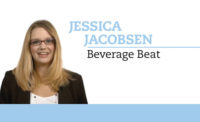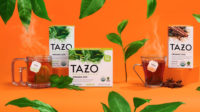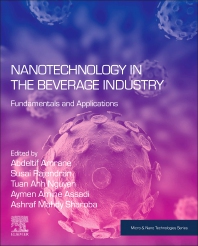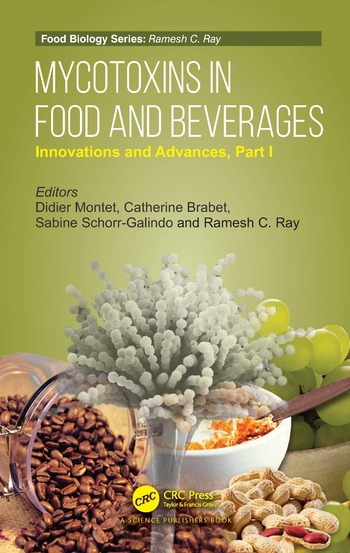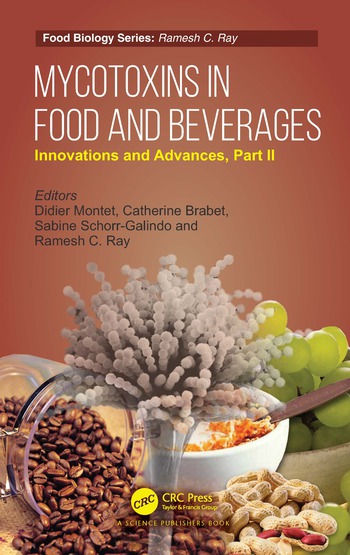Ingredient Spotlight
No surprise, tea market is hot
Health halo bolsters tea’s popularity

Image courtesy of Getty Images
When Mariano Rivera was eligible for the National Baseball Hall of Fame and Museum as voted on by the Baseball Writers Association of America in 2019, it was no surprise that the MLB pitcher was elected into the Hall of Fame on his first ballot. The only question was whether it would be unanimous, which it was for the first time in the association’s history.
Given the popularity of tea, suppliers also have noted to their lack of amazement that the tea ingredient market has seen increased demand.
“The tea ingredient market has continued its single-digit growth this past year, which comes as no surprise given retail sales of tea and [ready-to-drink] (RTD) tea saw a nearly 5% increase in 2022 and is projected to rise by slightly over 5% this year, as reported by Mintel,” says Rikka Cornelia, marketing manager at Martin Bauer Inc., Secaucus, N.J.
Philip Caputo, marketing and consumer insights manager at Brooklyn, N.Y.-based Virginia Dare, anticipates that this demand for tea ingredients will only continue to grow.
“The tea ingredient market has performed brilliantly and should continue growing over the next decade,” he says. “After water, tea is the most popular beverage in the world, according to the Tea Association of the U.S.A. The ready-to-drink tea market in particular is slated to rise from $34.3 billion (U.S.) in 2023 to $72.8 billion by 2033, Future Market Insights reports. At Virginia Dare, we’ve noticed this increasing demand in tea flavor requests across all types ― black, green, white and herbal tea ― although black tea still reigns supreme.”

As beverage-makers interest in tea solutions continues to grow, experts highlight how the growing consumer interest in natural beverages aligns with tea’s attributes.
“Over the years, we’ve only seen interest grow in natural tea since our proprietary extraction process pulls all flavor from the leaves, making the raw material go further,” Caputo says. “Tea is one of few flavors with a widespread health halo transcending markets and cultures. Including ‘made with real tea’ on your label captures that interest in natural beverages.”
Kelsey Anderson, marketing and communications manager at Florida Food Products (FFP), echoes similar sentiments in terms of demand for natural, clean-label ingredients.
“We know the ‘better for you’ shift in food and beverage consumption is more of a lifestyle change rather than a quick trend,” Anderson says. “Consumers are increasingly seeking minimally processed clean label products, with a minimal, easy-to-read, transparent ingredient list.”
Martin Bauer’s Cornelia notes that health-conscious consumers are particularly interested in tea as an alternative to artificially flavored and sweetened beverages.
“Many key players in the tea segment adopted a ‘no artificial ingredients’ approach long before brands in other beverage segments did, placing them ahead of the curve when it comes to the natural trend,” she says. “As this trend continues to gain momentum in the mainstream market, it can contribute to the continued/increased popularity of tea.”

Function focus
Beyond tea’s association as a natural beverage, experts also note that tea ingredients support another burgeoning segment within the beverage market: functional beverages.
Micah Greenhill, senior marketing director of beverages at ADM, Chicago, notes that functional beverages have taken center stage.
“Consumers want more proactive, personalized and balanced wellness support, while seeking solutions that deliver multiple benefits in one product offering,” he says. “Tea and tea extracts help support this demand, signaling to consumers that products are formulated to support immune function, gut health, mood and energy.”
Citing FMCG Gurus 2022 “Hot Drinks Global Report,” Greenhill shares that 60% of consumers view hot black tea as healthy.
“Plus, RTD teas that include black, green or matcha tea extracts and powders bode well for this space, as consumers associate these ingredients with energy and cognitive function,” he explains. “Concurrently, easy, convenient formats, like RTD teas, provide functional attributes that consumers are seeking in beverage purchases. Kombuchas also fit well into this trend for their perceived digestive health support. For those looking for rest and recovery support, chamomile is widely linked by consumers to relaxation.”
FFP’s Anderson also notes that consumers’ interest in functional beverages aligns well with tea ingredients.
“We also see consumers focusing on beverages that provide functional benefits,” she says. “Coupled with the focus on ‘better for you products,’ consumers want natural ingredients that support healthier lifestyles, whether that is sustained energy, increased cognitive function, or a way to reduce stress and anxiety. FFP naturally offers these functional ingredients, such as natural caffeine, L-theanine, EGCG, through our teas, coffee, and juice concentrates.”
Martin Bauer’s Cornelia explains that the adage “you are what you eat” has put the spotlight on dietary choices.
“This has led to a rise in demand not only for natural and healthier products, but also for those with enhanced functionality and premium quality – traits that tea embodies,” she says. “With its wide range of benefits, from antioxidants to energizing properties, tea is highly praised as a functional ingredient.”
Meanwhile, Virginia Dare’s Caputo notes that the demand for sustainable and ethically sourced ingredients as well as premiumization trends are elevating tea as a formulation solution.
“Products are reaching a time when sustainable, ethical ingredients are becoming a need-to-have, rather than a nice-to-have,” he says. “Virginia Dare’s emphasis on transparent sourcing grew organically from our business model with boots-on-the-ground relationships in growing regions, which allows our clients to highlight their own product stories with an emphasis on thoughtful sourcing.
“Premium trends also dovetail with tea extracts and flavors,” Caputo continues. “Tea flavors can be very down-to-earth and accessible, but they have the range to become sophisticated, like an Earl Grey boysenberry or a bold, creamy Ugandan vanilla black tea.”

Feeding the demand
As consumers’ look to satiate their thirst for tea, black and green tea remain the go-to solutions for a host of reasons.
“Green and black tea are popular choices for beverage formulations due to their natural and health-promoting properties, serving as attractive bases for formulating beverages that cater to the preferences and priorities of health-conscious consumers,” FFP’s Anderson says.
Meanwhile, Virginia Dare’s Caputo notes that as consumers demand more from tea, it is important for products to deliver on that freshness.
“We’ve always provided tea extracts and concentrates to restore the true tea taste that’s lost during production,” he explains. “The resulting product tastes like real tea because it is — we use natural extracts and concentrates, which appeals to consumers whose palates are becoming more advanced. That freshness is important and goes hand-in-hand with natural and clean label trends.”
Beverage-makers also can take innovative approaches with these tried-and-true tea varietals.
“Black and green tea will still capture the lion’s share of demand, but for certain brands, highlighting a lesser-known varietal might be the way to go,” Caputo explains. “However, black tea products still have many opportunities to stand out with a flavor approach we like to call Elevated Classics. It combines a tried-and-true classic flavor like black tea and adds interesting profiles, which appeal to both the safe and adventurous consumer.”
Yet, the dominance of black and green is not preventing beverage manufacturers from exploring new and emerging tea varietals.
“As the appeal of botanicals continues to grow, ingredients like ginger (59%), dandelion (58%), chai spices (58%), spearmint (58%) and hibiscus (57%) are the top flavors consumers want to see in beverages,” ADM’s Greenhill says, citing FMCG Gurus 2022 “Hot Drinks Global Report.” “Ginger, specifically, has remained a beloved inclusion in the beverage space for providing unique flavor notes that can range from sweet to peppery and spicy. Consumers also associate the ingredient with supporting digestion and comfort, making it highly sought-after for kombuchas, RTD teas and hot tea beverages. Think of a unique ginger berry yerba mate RTD tea or a lemon ginger green tea energy drink.”
Martin Bauer’s Cornelia adds that single origin solutions also are carving their niche in the market.
“Beverage-makers are increasingly looking to distinguish their products through compelling story telling around single-origin tea, like the renowned Darjeeling,” she says. “It adds a distinct layer of value and authenticity to their offerings.”
Yet, beverage-makers recognizing the power of tea are now embracing the ingredient beyond tea beverages.
“Expanding beyond the confines of the tea and RTD tea market, tea serves as an accessible entry point for brands venturing into the functional beverage space or embracing the hybridization trend,” Cornelia says. “This is due to its familiarity among consumers and its versatility as an ingredient. Brands across various segments, such as alcohol and juice, are now incorporating tea to leverage its health halo and flavor.”
FFP’s Anderson adds that tea can operate as a foundational element in a variety of beverage formulations.
“Not only does it provide distinctive taste, but also contributes natural compounds, such as antioxidants and other health-promoting components, making it an appealing choice for creating a wide range of beverages,” she says. “The use of teas as a base adds depth, character, and potential health benefits to the final product, catering to the preferences of consumers seeking both flavor and wellness in their beverages.”
ADM’s Greenhill notes that although hybridization has remained niche for tea, it became more prominent this past year.
“We’re starting to see teas move into non-traditional formats with unique flavor offerings, such as an RTD matcha tea latte, iced green tea with honey and ginseng, as well as being highlighted in sports and energy drinks,” he says. “Individuals are actively pursuing healthier beverage options, leading to a convergence of different tea categories and the emergence of innovative hybrid blends. This growing mindset of seeking versatility and improved nutritional value is signaling a shift towards broader and more inclusive tea product offerings.”
Looking for a reprint of this article?
From high-res PDFs to custom plaques, order your copy today!





